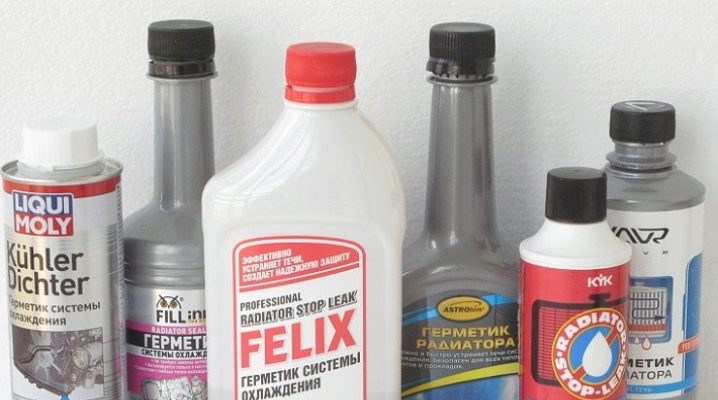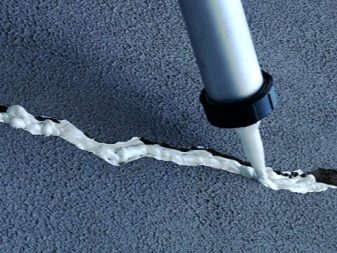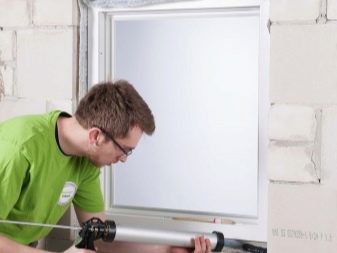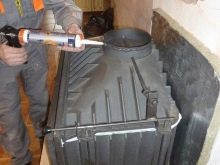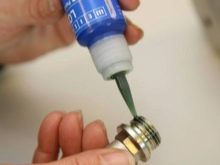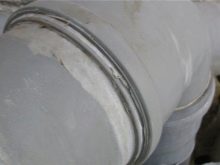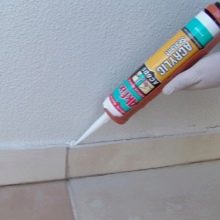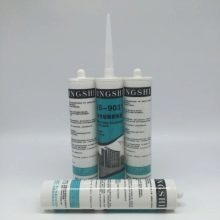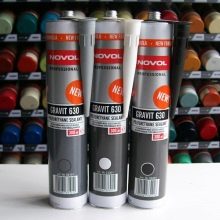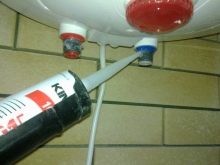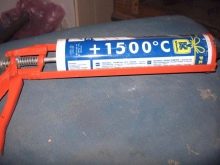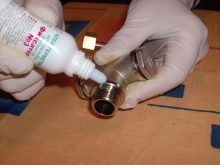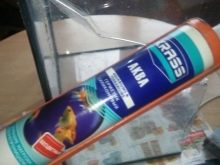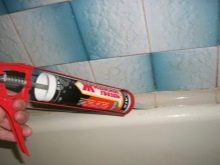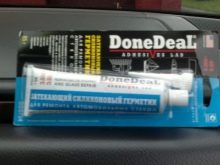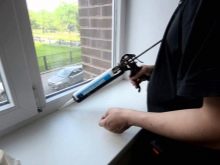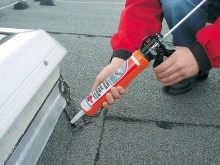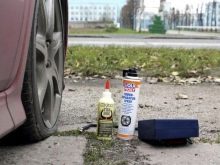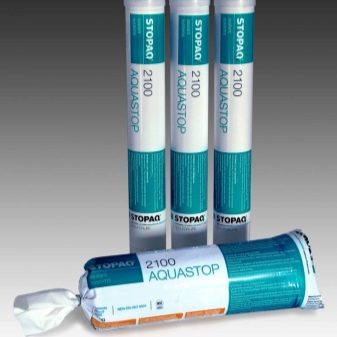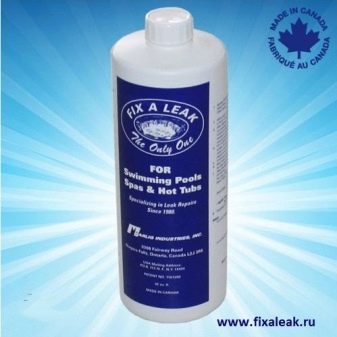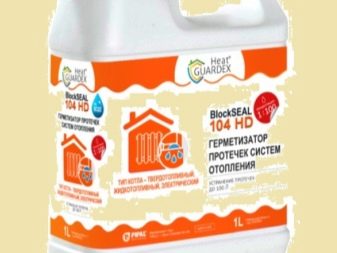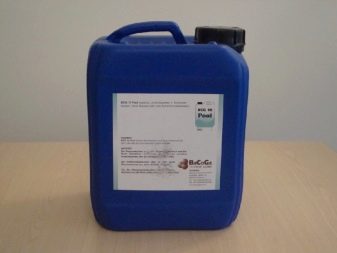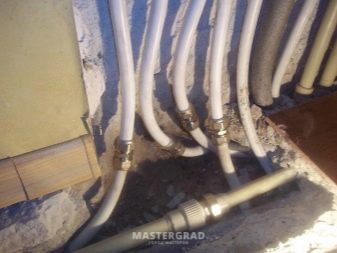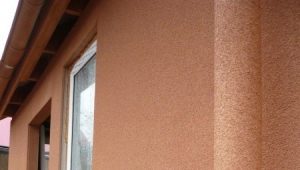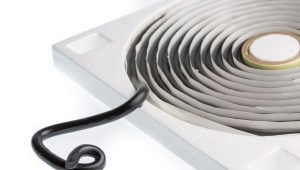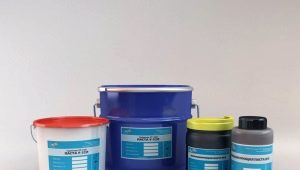Features of liquid sealants
Sealant is a pasty polymer composition that may have a different viscosity. Its main purpose is the elimination and sealing of gaps, docking of various surfaces. A variety of sealants are its liquid modifications.
Specifications
Liquid sealant is used to eliminate leaks in heating systems, gaps and joints between pipes, radiators and boilers. This composition is polymeric and is characterized by the ability to self-compacting and is suitable for sealing gaps both from the inside and outside of the system.
The principle of action of the sealant is based on the effect of polymerization of the composition upon contact with air. The latter is inevitably present in violation of the integrity of the heating system.
Due to this feature, the use of a liquid product for sealing allows solving the following tasks:
- sealing gaps inaccessible for visual perception;
- elimination of cracks in hard-to-reach places where it is impossible to use a clamp or soldering;
- elimination of leaks in the heated floor system without dismantling the walls and the floor itself, floor covering;
- pipe sealing with concealed installation system.
Kinds
Depending on the composition of the liquid sealant, there are several varieties of it.
- Acrylic. They are distinguished by the environmental friendliness of the composition, good adhesion to various materials, but they cannot stand high temperatures.
- Silicone. They are characterized by versatility, since they are quite elastic, combined with the main types of materials of heating systems, and can be used for both hot and cold water pipes. All silicone compounds are divided into acidic and neutral. The first ones should not be used when working with metal parts, since they provoke the appearance of corrosion, which, in turn, leads to the rapid destruction of surfaces.
- Polyurethane. They have improved adhesion, are resistant to high temperatures and sharp thermal changes, do not lead to the formation of rust.
A separate group of liquid sealants form compositions for threaded connections. Both solutions are based on silicone and allow you to get a sealed connection of parts with threads, without the use of FUM-tape and similar materials.
Such sealants for threaded connections are drying and non-drying. The first disadvantage is the tendency to shrink after drying, which is fraught with cracks and seal failure. Non-drying modifications are free from this drawback, but can be knocked out with strong pressure.
Another type of sealants of this type is anaerobic. The principle of their action differs from that described above. The polymerization of the composition occurs exclusively in an airless environment.
Having a liquid consistency, the composition easily fills the space of the gap and, falling into airless conditions between the parts, freezes.
The advantage of anaerobic compounds is their strength (used even in the military and aircraft industries), resistance to high and low temperatures and their abrupt change, chemical inertness (including alkaline and acidic media), which practically does not limit its use depending on the type heat carrier.
The disadvantage of the composition of the anaerobic effect is formed by the heavy-duty connection, because of which sometimes impossible to dismantle parts.
Depending on the type of heat carrier, liquid compositions for pipes can also be divided into several types:
- for gas boilers and solid fuel boilers;
- for water supply and heating systems;
- for heating pipes with antifreeze.
Scope of application
Liquid sealant has a wide scope of application and can be used when performing various types of work.
- Fixing various surfaces. In this case, the sealant is similar to "liquid nails." He allows to fasten among themselves various, including diversified, materials. The resulting composition layer is transparent, imperceptible, but very durable - withstands up to 50 kg. Suitable for joining ceramic, glass, textile, plastic and silicate surfaces.
- Plumbing work. Allows you to eliminate leaks that are not visible to the eye or are in hard-to-reach places, in the systems of heating, gas supply, water supply, sewage pipes. It is used to seal the joints of the sink and pipes, pipes and systems of radiator, boiler.It can be used both at home and in public institutions.
- Car repair. Suitable for filling gaps in various auto systems, can be used when replacing gaskets, in the cooling system of the car.
- Sealants, working on the principle of "liquid plastic". Suitable for eliminating gaps in plastic windows, as well as other PVC-based surfaces. They contain adhesive components, including PVA, due to which solidity of the material is formed.
- Work and operation imply harsh conditions. For these purposes, polyurethane foam compositions are used, which are characterized by increased resistance to moisture, high and low temperatures, and chemical reagents. Such solutions are called "liquid rubber" because the seam formed is similar to this material.
- Scope of application of liquid sealants based on polyurethane foam also are roofing work - filling the joints and gaps. In this regard, the composition is sometimes called "sprayed waterproofing."
- Polyurethane Sealing Compound can eliminate a puncture in a car wheel tire.The inner surface of the wheels of cars operated in harsh conditions, can also be filled with this sealant. He then plays the role of a protective layer.
Manufacturers: reviews and reviews
Like any sealant, it is better to choose a liquid composition from a well-known manufacturer that has won the trust of customers. To date, there are several reputable brands.
- "Aquastop". Sealants from the Russian manufacturer "Akvaterm", suitable for the elimination of latent leaks in pipelines, sewers, heating systems, basins, water tanks. According to customer reviews, this is one of the few domestic companies that demonstrate high quality products at affordable prices.
- Fix-A-Leak. Sealants from this manufacturer are suitable for eliminating gaps in the basins of pools, spa systems. Repair is possible even in remote places and does not require water replacement. Good adhesion with most materials: plastic, fiberglass, acrylic, concrete, as well as on painted surfaces.
- HeatGuardex. Composition for the elimination of leaks in the pipes of heating systems. Does not cause the development of corrosion, contributes to the normalization of pressure.
- BCG. The product from the German manufacturer, showing the highest quality. Suitable for eliminating invisible and hard-to-reach crevices in heating and plumbing systems, as well as pools and similar water tanks. Used on surfaces made of metal, plastic, concrete.
Tips
For each type of work, the material should be selected appropriate composition. If you use an unsuitable sealant, you can at least not get the expected effect, the maximum - to provoke rupture of pipes, the appearance of corrosion.
When choosing a composition for heating systems, it is important to consider its compatibility with the coolant. Sealants intended for water are not suitable for pipes through which antifreeze, anti-corrosion or saline solution flows. Finally, another selection criterion is the stability of the composition to high or low temperatures.
If the composition is poured into the heating system, then the same amount of coolant from which the antifreeze will be poured in should be drained from it. Before carrying out work it is recommended to make sure that the boiler or expansion tank is in good condition.In some cases, the reduction of pressure is considered an indirect indication of the appearance of leaks, although it is a dysfunction of the tank or boiler.
During the work it is necessary to take into account that the liquid sealant has a high polymerization rate, therefore, if it has spilled beyond the limits of the working bases, it is better to immediately eliminate the excess. After solidification, it will be difficult and fraught with damage to the surface.
To remove the frozen sealant, it is better to use special solvents, selected in accordance with the characteristics of the polymer. Before applying the solvent, it is important to ensure that it does not damage the surface to be cleaned. To do this, a small amount of the solution should be applied to the material sample or in an inconspicuous place.
Full curing of the sealant occurs in 3-4 days. If it is poured into the system of aluminum or with its elements, then a week after the work, the liquid from the pipeline should be drained and rinsed with clean water.
Sealant can replace "liquid nails", demonstrating fixing and adhesion. But the "liquid nails" in this differ from the sealant and can not be used instead of it in the heating system or the pipeline.
During the work with liquid sealant it is not necessary to allow its hit on skin and mucous. If this does happen, then the affected areas should be washed with plenty of running water.
How to choose the right sealant, see the next video.
